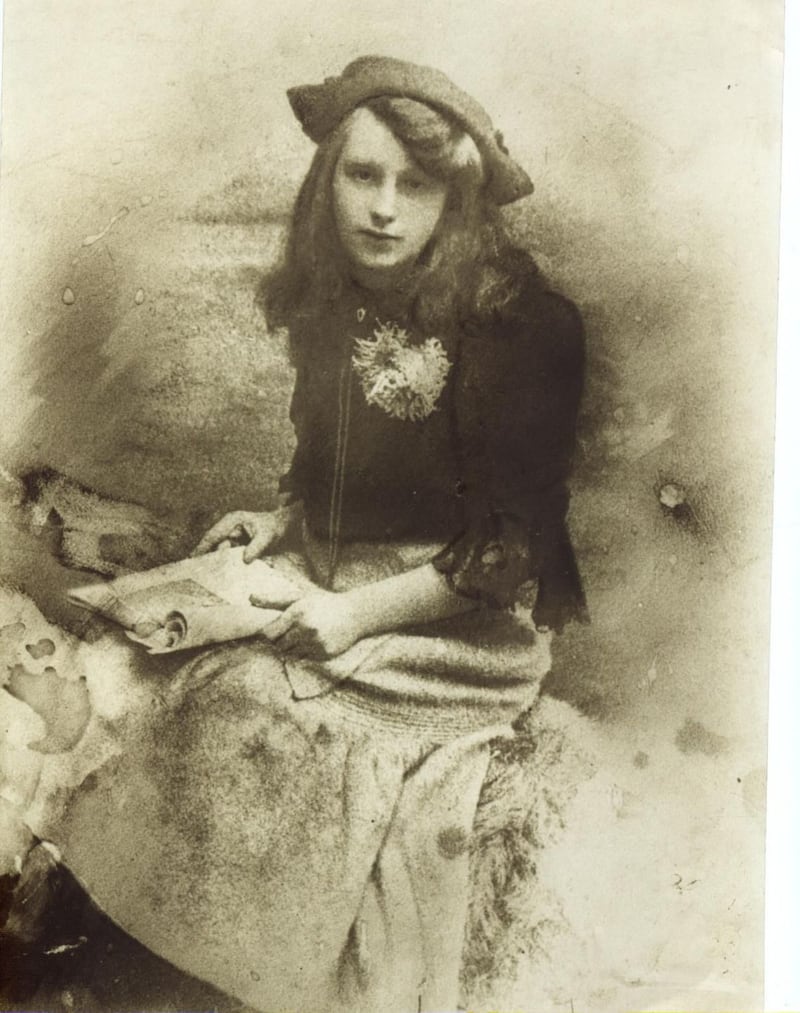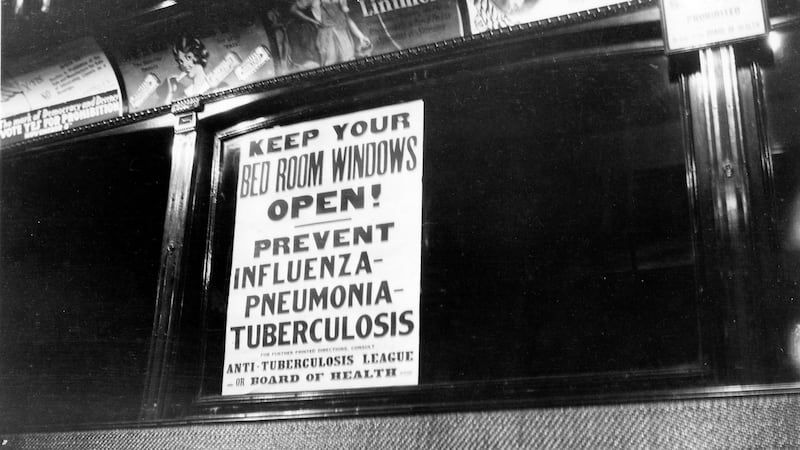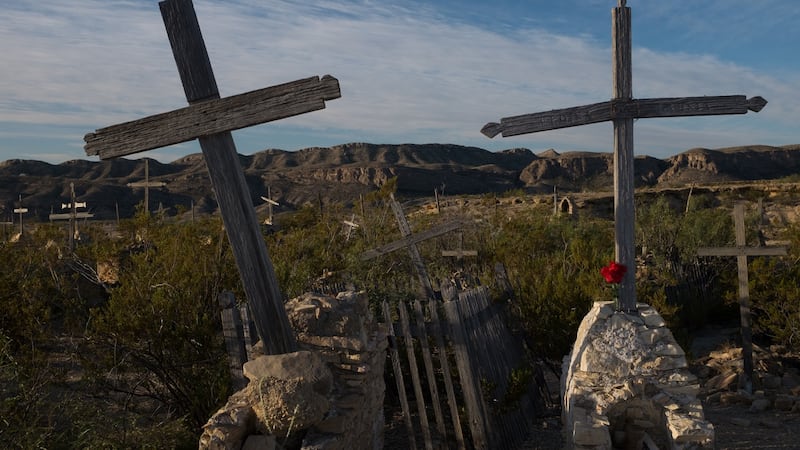Sometimes, in our careers, we are lucky enough to hit on a topic that becomes more than work, a life force of its own, a passion. In 2004, I was searching for an MA research project in Maynooth, and with the timidity of the mature student asked the research adviser if the then little-known 1918-19 influenza pandemic in Ireland might be suitable. He looked me in the eye, and asked: “Are there enough sources?”
Fourteen years on, and with a book just published, the answer is definitely yes. In the interim, the subject has gone from being one that was obscure in an Irish history context to being one of the main themes of this year’s Decade of Centenaries. It seems no discussion of 1918 history is complete without an influenza output, including an exhibition in Glasnevin Cemetery and Museum in a collaboration with TCD School of Histories and Humanities, History Ireland Hedge Schools and RTÉ’s Nationwide. The subject has been large enough to accommodate three very different PhD dissertations, by my good colleagues Dr Patricia Marsh and Dr Catriona Foley as well as myself.
For an early career historian, this captivating topic has been quite the teacher, forcing me to research across many fields of history. I had to immerse myself in the tense political situation, as influenza infected the anti-conscription campaigners taken out of circulation under government-alleged collusion in a trumped up ‘German plot’. With impeccable timing, the flu killed Richard Coleman, interned in Britain, just days before the pivotal 1918 general election which brought Sinn Féin a massive victory and set us firmly on the path to independence.

Then there was familiarising myself with the impact of the war on medical provision. When the flu struck, many doctors and nurses were away at the war front. As doctors became ill with the disease themselves, it was difficult to get replacements. The pandemic therefore gave doctors a bargaining power to improve their appalling pay and pensions, ending a long-term struggle by the medical organisations. Civilian hospital wards were full of soldiers until the second wave, when the beds just had to be freed up for flu patients.
How was flu understood by contemporary medical science, and how did that impact on treatments? Bacteriology was the hot new thing, and doctors were excited at its apparent ability to help them combat infectious disease, at last, as death statistics from infectious disease in general were falling in the 1910s. Here was a disease that punctured that confidence. Their bacteriological understanding of influenza was flawed: it was not of course Pfeiffer’s bacillus (haemophilus influenza) but a virus, which was not confirmed until the 1930s. They were injecting people – often already suffering from influenza – with vaccines they understood to be mixtures of bacteria, usually Pfeiffer’s, streptococcus and pneumococcus. What would that have done to their bodies, helped or hindered their recovery?
I had to learn how to do Excel sheets, graphs and charts, to unfurl the complex and fascinating demographical information of this influenza. What age groups were most likely to die? The answer to that was young adults and children under five years old, which pointed me to the impact on families. Did it affect some classes more than others? Unsurprisingly, the children of the lower socio-economic class families, particularly those of casual labourers, had a much higher than average rate of death. But it killed across all classes with a surprisingly even hand. The distinguishing factor shared within each of the four classes used by the Registrar General to classify death was that workers who dealt with the public were more likely to die. Families of postmen, police, priests, shop workers, bankers, soldiers, doctors and street hawkers were particularly vulnerable.
Oral history has become important to my work on the history of this influenza pandemic in Ireland, to understand what happened to families. Without the human voice, the statistics for death and sickness from disease are dry, skeletal bones of the story. Newspapers add in the sinews, the connectivity showing how and when it arrived, and where it spread next, and how the government, the health system and communities were coping. Medical reports give us the grey matter, the medical intelligence of the time. The voices of survivors, or of people whose lives are changed by the death of family members, add flesh to the dry bones and sinews, and breathe life into the story. They enable me, as historian, to understand and explain the human impact, the shocking mess it made of family lives and communities when it happened and, surprisingly, for long after.


For many, the trauma has lasted through more than one generation; losing a father or mother to influenza has had long legs. It might have meant losing not only a parent, but their home, if the house was part of their father’s or mother’s job. Many workers who died did not have pensions or life insurance, so the family income was greatly diminished or completely disappeared, and the surviving parent had to cope. Some did this by sending their children away to other members of the family while they tried to get back on their feet, economically. It was the only thing they could do, to survive, but this compounded the trauma of parental loss for the children. Others never knew where their beloved mother or father was buried, or even what they had died from, until the death certification came online very recently.
Some sufferers did not realise until their nineties that the illness they remembered so well as a child was part of this largest ever influenza pandemic, one of the greatest disease events the world has ever known. For many of my 50 or so interviewees, the oral history interview was a voyage of uncovery as we connected their experience of the disease itself, and explored what it did to the rest of their lives. Sometimes the connections that emerged have been breath-taking in their reach and sadness.
As my interviewees spoke of the flu, they also added in stories of other deaths in their families. In the Ireland of the 1910s, when the flu occurred, the background level of death from infectious disease is almost unimaginable to our modern eyes. Twenty per cent of the annual deaths – about 70,000 each year on the entire island – were of children under the age of five. That still shocks me, no matter how often I handle those statistics.
The children of the poor, in city tenements, were particularly affected, living in poor conditions in close quarters, and with poor washing facilities, where infections were hard to contain. The biggest perennial killers were tuberculosis, pneumonias, and bronchitis, but measles, scarlet fever, diarrhoea and whooping cough also each killed hundreds of little Irish children each year.
Improved environmental and social conditions – new housing, dependable pay and social welfare supports, cleaner air, refrigeration and pasteurisation – made a massive difference to the statistics. The introduction of antibiotics from the late 1940s, and the increased vaccination programme also made a huge contribution to saving lives and reducing the damage that these diseases once made.
My job for the last four years has been to collect oral histories and facts about the impact of diseases like the influenza pandemic, measles and meningitis, rheumatic fever and whooping cough, and write the human experience into the histories of these diseases in a research project jointly funded by the Irish Research Council and Marie Curie Actions at the history departments in Maynooth University and Queen’s University Belfast. My next book will again use oral history to tell the history of infectious disease, this time on the changing landscape of childhood diseases in the 20th century. How and why did things change?
We live in an age of increasing vaccination resistance, as younger generations of parents are not generally aware just how dangerous diseases like measles or whooping cough were and can be. Or influenza. They have come, therefore, to think the vaccine poses more of a threat to their child than the disease. The generous sharing of experiences of infectious disease by my interviewees – sufferers and their families, doctors, nurses and other medical workers, local authority workers and politicians who played critical roles and gave leadership – may, I hope, help to increase that awareness. In the interim, at least this 1918-19 influenza addict has at last added a book to the growing canon of international research on the pandemic, after a 14-year journey.
Dr Ida Milne is an Irish Research Council Marie Curie Fellow, Maynooth University and Queen's University Belfast, 2014-18. She is author of Stacking the coffins: Influenza, war and revolution in Ireland, 1918–19 (Manchester University Press, £25)










